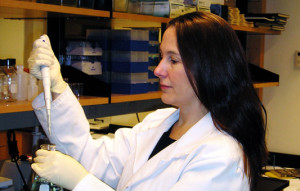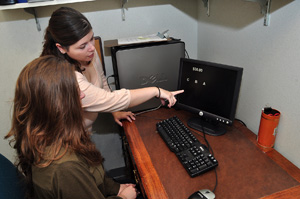Every year, there are more than 30,000 suicides and ten times as many suicide attempts in the United States. Suicide is the third greatest cause of death in young people.
Unfortunately, the death and injury rates due to suicide attempts have not declined over the last two decades, suggesting that we need a paradigm shift in prevention to meaningfully reduce the suicide rate. Better and more successful prevention requires improving our knowledge regarding the causes of suicidal behavior.
Conte Center Focus
The Conte Center at Columbia University and The New York State Psychiatric Institute is funded by the National Institute of Mental Health. The Conte Center employs a multidisciplinary approach to study how childhood adversity can mold the predisposition to suicidal behavior and affect suicide risk in later life.
We know that a combination of genes and early childhood experience determine how likely people are to respond to psychiatric illness and stressful life events with a suicide attempt. Suicide is a complication of psychiatric illness in over 90% of cases, but the group at risk for suicide has a distinct set of additional differences that collectively account for their vulnerability.Those differences include being more pessimistic, less flexible and creative in problem solving, and more likely to act on powerful negative emotions.

These features combine to make a person more profoundly impaired by the pain of depression, more hopeless about offers of help or treatment being able to provide them with relief, feeling trapped or stuck in a situation with no way out, and more likely to seek relief from emotional pain by ending their lives.
Learning more about brain functioning is key to understanding these characteristics. Studies of suicides and of patients who have survived a suicide attempt have revealed that suicide risk in the context of major depression is associated with abnormalities in neurotransmitters that are responsible for regulation of mood, subjective perception of mood, reaction to stress, and decision-making.
These differences in brain circuitry are now known to be partly inherited, and partly the product of childhood adversity. To learn how childhood adversity impacts on our genes and brain development to increase the risk of suicide, we will carry out a series of five integrated studies or projects.
Project 1
 Project 1 (directed by Dr. Victoria Arango) uses brain tissue donated by families to study factors that may contribute to suicide. Information obtained from family members, in a method called psychological autopsy, helps us to examine the relationship of childhood adversity to gene expression or function in neurons. We study how suicide relates to 1) aggressive traits, 2) cell growth and death, 3) the stress response system, and 4) connections between neurons in key brain circuits involved in mood regulation and decision-making.
Project 1 (directed by Dr. Victoria Arango) uses brain tissue donated by families to study factors that may contribute to suicide. Information obtained from family members, in a method called psychological autopsy, helps us to examine the relationship of childhood adversity to gene expression or function in neurons. We study how suicide relates to 1) aggressive traits, 2) cell growth and death, 3) the stress response system, and 4) connections between neurons in key brain circuits involved in mood regulation and decision-making.
Project 2
 Project 2 (directed by Dr. Frances Champagne) uses a mouse model to examine similar concepts as Project 1. We study effects of maternal deprivation on anxious and aggressive behaviors, and on the expression or function of genes, neuronal growth and death, and brain circuits. This project also tests the potential benefit of an enriched parenting and caring environment as a potential way of reversing the adverse effects of prolonged maternal deprivation.
Project 2 (directed by Dr. Frances Champagne) uses a mouse model to examine similar concepts as Project 1. We study effects of maternal deprivation on anxious and aggressive behaviors, and on the expression or function of genes, neuronal growth and death, and brain circuits. This project also tests the potential benefit of an enriched parenting and caring environment as a potential way of reversing the adverse effects of prolonged maternal deprivation.
Project 3 and Project 4
 Project 3 (directed by Dr. J. John Mann) and Project 4 (directed by Dr. J. John Mann) and Project 4 (directed by Dr. Kevin Ochsner) will use two brain imaging modalities — positron emission tomography (PET) and magnetic resonance imaging (MRI) — to study risk and resilience factors for suicide in patients with major depression.
Project 3 (directed by Dr. J. John Mann) and Project 4 (directed by Dr. J. John Mann) and Project 4 (directed by Dr. Kevin Ochsner) will use two brain imaging modalities — positron emission tomography (PET) and magnetic resonance imaging (MRI) — to study risk and resilience factors for suicide in patients with major depression.
We are studying two groups of patients with major depression. Patients with a history of a suicide attempt are more at risk for future suicidal behavior. Patients who have never made a suicide attempt may be less vulnerable to suicidal behavior. Additionally we will study healthy volunteers as a comparison group.
Our research study compares these groups of patients and healthy volunteers, asking research questions about how specific abnormalities in mood regulation, cognition, stress response and brain function affect suicidal behaviors.
Neuroimaging used to quantify how a history childhood adversity relates to binding of neurotransmitters to receptors, using PET scanning, and to brain circuits involved cognitive control of emotion, using functional MRI scanning.
Project 5
 Project 5 (directed by Dr. Barbara Stanley) is a clinical characterization of all the participants in the two brain imaging projects. We are studying the relationship of reported childhood adversity to aggressive traits and how aggression connects to stress responsiveness and type of suicidal behaviors. Aggression and stress responses are measured both by laboratory tests and by evaluation in the real world using mobile devices that ask the person at regular intervals how they are doing and what stresses they are coping with throughout the day. This approach, assessing patients in their daily lives and natural setting, is a new frontier in medicine that is called ecological momentary assessment. We use special clinical laboratory tests that measure stress response and aggressive responses, and compare these results with patients’ reactions in everyday life.
Project 5 (directed by Dr. Barbara Stanley) is a clinical characterization of all the participants in the two brain imaging projects. We are studying the relationship of reported childhood adversity to aggressive traits and how aggression connects to stress responsiveness and type of suicidal behaviors. Aggression and stress responses are measured both by laboratory tests and by evaluation in the real world using mobile devices that ask the person at regular intervals how they are doing and what stresses they are coping with throughout the day. This approach, assessing patients in their daily lives and natural setting, is a new frontier in medicine that is called ecological momentary assessment. We use special clinical laboratory tests that measure stress response and aggressive responses, and compare these results with patients’ reactions in everyday life.
The results of these tests will be related to the brain imaging findings and to the history of childhood adversity as well as to the function of key sets of genes that regulate stress responses and brain circuit formation and maintenance.
In summary, these projects probe for inherited or acquired abnormalities in brain biology, genes, mood control, and problem solving that are characteristic of risk for suicidal behavior.
We expect our results to help elucidate how early adverse experiences affect gene expression and brain biology to increase risk of suicidal behavior later in life.
Our eventual goal is to discover how we can reduce or prevent suicide risk.
